Perched on a hilltop in southern Tuscany, Montalcino captivated me from the moment I arrived. This medieval town, with its honey-colored buildings and narrow winding streets, feels like stepping back in time.
The 14th-century fortress stands as Montalcino’s crown jewel, offering breathtaking panoramic views of the surrounding Val d’Orcia countryside that will make your camera work overtime.
Walking through Montalcino’s historic center, I discovered a perfect blend of Gothic, Romanesque, and neoclassical architecture. The town’s well-preserved medieval character shines through in its ancient walls, charming piazzas, and stone pathways that seem to whisper stories from centuries past.
Every corner reveals something new – from tiny craft shops to family-run restaurants serving local specialties.
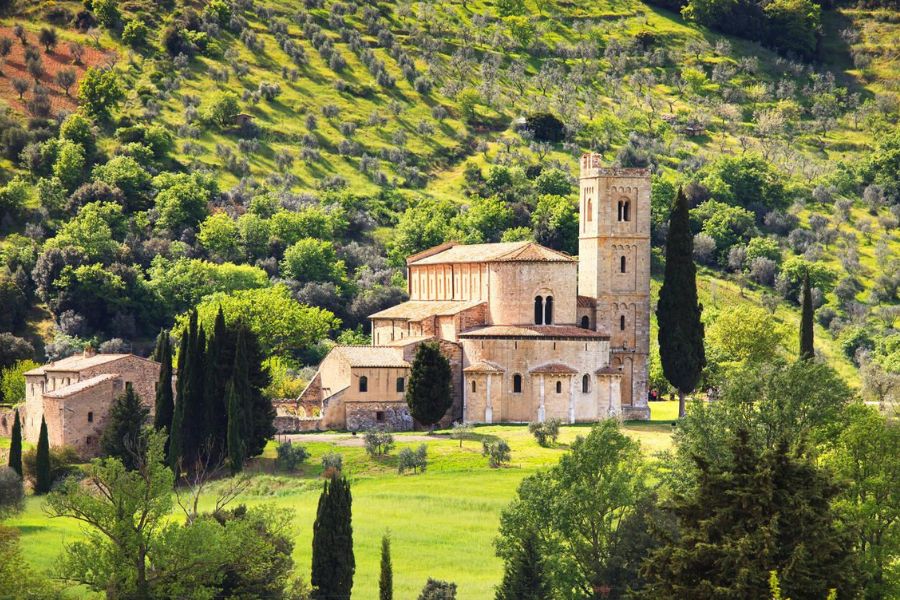
What makes Montalcino truly special is how it balances its rich history with living traditions. While exploring its medieval streets, you’ll find yourself surrounded by the culture that produced the world-famous Brunello di Montalcino wine. The fortress itself now houses a wine bar where you can taste this renowned local treasure while gazing across the stunning Tuscan landscape that has changed little since medieval times.
Montalcino’s Rich History
Montalcino’s storied past is deeply intertwined with Tuscany’s medieval heritage and wine production legacy. The town’s strategic hilltop position made it a coveted stronghold while its fertile lands gave birth to one of Italy’s most celebrated wines.
The Birthplace of Brunello
Walking through Montalcino, I can feel the centuries of winemaking tradition in every stone. The town’s wine history dates back to the 14th century, but it was in the 1870s when Brunello di Montalcino was born.
Local vintner Ferruccio Biondi-Santi created this remarkable wine by isolating the Sangiovese grape variety. His innovation transformed Montalcino’s future.
Today, Brunello stands as one of Italy’s most prestigious wines. The strict production guidelines require aging for at least five years before release. The Val d’Orcia’s unique climate and soil contribute to the wine’s distinctive character.
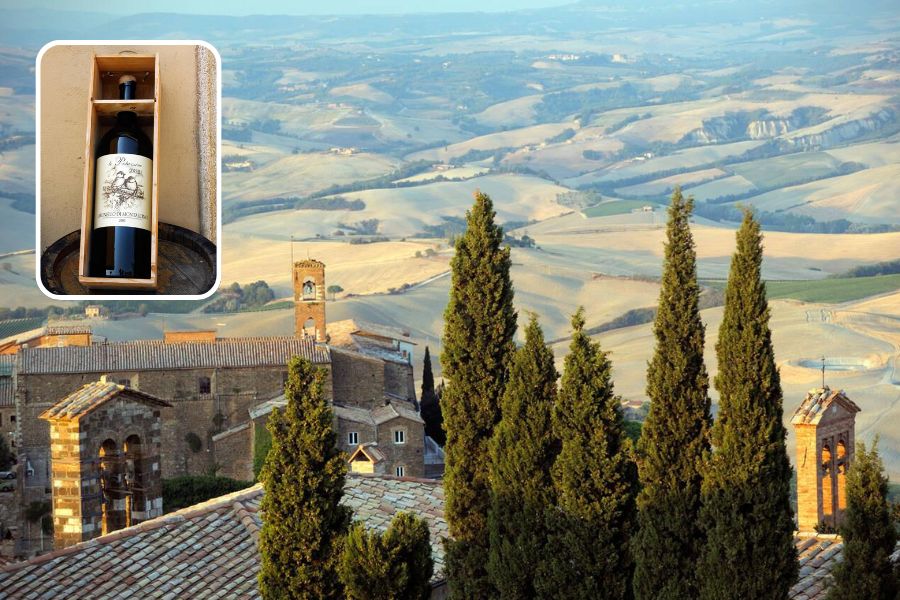
Local wine cellars invite visitors to taste history in a glass. Each sip tells the story of generations of winemakers perfecting their craft.
Fortress of Montalcino
The imposing 14th-century fortress dominates Montalcino’s skyline, a testament to the town’s strategic importance. I was awestruck by its pentagonal design and impressive walls when I first visited.
Built in 1361, the fortress served as the last bastion of the Sienese Republic. When Siena fell to Florentine forces in 1555, Montalcino’s fortress sheltered Sienese refugees for four more years.
The fortress remains remarkably well-preserved. Its massive ramparts offer breathtaking views of the surrounding Val d’Orcia landscape. On clear days, I could see all the way to Monte Amiata.
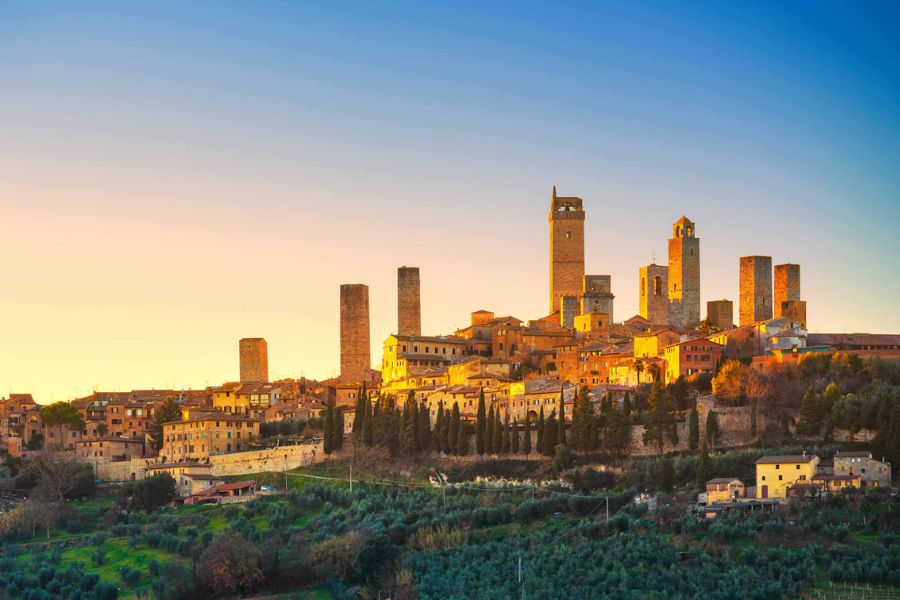
Inside, visitors can explore guard rooms and walk along the same battlements where soldiers once defended the town. The ancient structure now houses a wine bar featuring local vintages—a perfect blend of Montalcino’s military and viticultural heritage.
Vineyards and Wine Tasting Adventures
Montalcino’s rolling hills cradle some of Tuscany’s most celebrated vineyards, where the noble Sangiovese grape transforms into legendary Brunello wine.
Exploring Brunello Wineries
When I visited Montalcino, the vineyards stretching across the countryside took my breath away. The terraced landscapes create a patchwork of greens and browns that change with the seasons.
Many wineries welcome visitors for tours through their estates. I found family-run operations particularly charming, with owners proudly showing off generations of winemaking expertise.
The vineyards surrounding the 14th-century fortress offer both historical context and stunning panoramas. Walking among the vines, I learned how the unique microclimate and soil composition give Brunello its distinctive character.
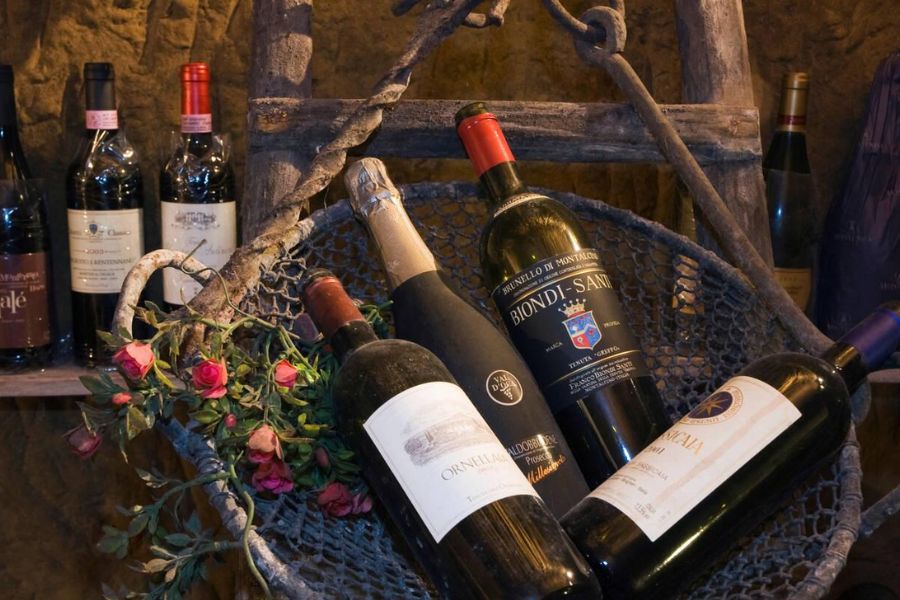
Most tours include visits to aging cellars where massive oak barrels hold wine for the required five years before it can be called Brunello di Montalcino.
The Art of Wine Tasting
Wine tasting in Montalcino isn’t just about drinking – it’s a sensory education. I discovered that proper tasting involves examining the wine’s color, swirling to release aromas, and finally savoring small sips.
Brunello, made exclusively from Sangiovese grapes, reveals complex flavors of cherry, leather, and spice. The younger Rosso di Montalcino offers a more accessible introduction to the region’s wines.
Many tasting rooms are housed in historic buildings with stunning views of the medieval town and surrounding valleys. The fortress itself contains an atmospheric wine shop perfect for sampling local vintages.
For the best experience, I recommend scheduling tastings in advance. Most include small food pairings that highlight how these robust red wines complement Tuscan cuisine.
Architectural Marvels and Piazzas
Montalcino’s skyline tells a story of power, artistry, and cultural evolution. Walking through the town, I’m constantly struck by the seamless blend of medieval fortifications and refined Renaissance touches that create Montalcino’s unique architectural identity.
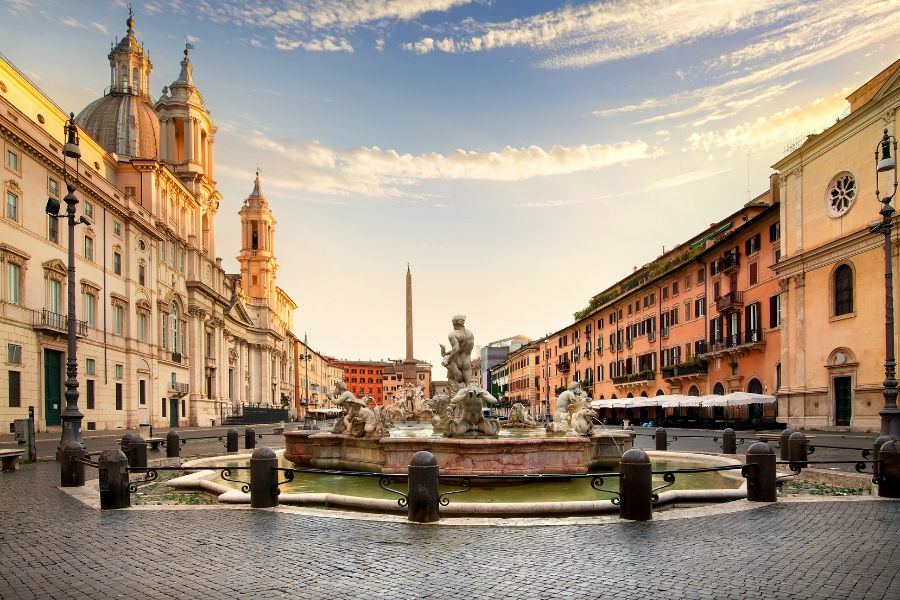
From Medieval Castles to Renaissance Elegance
The imposing Fortezza dominates Montalcino’s landscape, standing as a testament to the town’s strategic importance during the Middle Ages. Built in the 14th century, this pentagon-shaped fortress offers some of the most breathtaking panoramic views of the surrounding valleys and vineyards I’ve ever experienced.
The fortress walls, still remarkably intact, allow me to walk the same ramparts that once protected the last Sienese holdouts against Florentine rule. Inside, the courtyard has been thoughtfully preserved while accommodating a wonderful enoteca where I can sample Brunello wines.
Castello Banfi, just outside town, represents another architectural treasure. This stunning structure combines medieval defensive elements with more refined aesthetic touches. The stonework here tells stories of craftsmen from centuries past.
The Heart of Montalcino: Piazza del Popolo
The Piazza del Popolo serves as Montalcino’s living room – a space where locals and visitors alike gather to appreciate the town’s architectural beauty. The elegant Palazzo dei Priori dominates this square with its distinctive clock tower and Gothic-Renaissance façade.
I love spending afternoons here watching the interplay of light on the honey-colored stone buildings. The loggia of the palazzo provides welcome shade on hot Tuscan days.
Small cafés line the edges of the piazza, offering perfect vantage points to admire the architectural details. The Medieval and Renaissance architectural elements blend harmoniously, showcasing ornate window frames, heraldic emblems, and decorative stonework.

The piazza remains largely unchanged since the 14th century, giving me a genuine connection to Montalcino’s past each time I visit.
Gastronomic Delights of Montalcino
Montalcino offers a feast for the senses with its rich culinary traditions that perfectly complement its stunning landscapes and historic charm.
Savoring Tuscan Cuisine
When I visited Montalcino, the authentic Tuscan flavors captivated me immediately. The region’s cuisine emphasizes simple, hearty dishes made with fresh, local ingredients.
The star of many menus is cinghiale (wild boar), often prepared as a savory stew or ragu served over fresh pasta. This gamey meat pairs wonderfully with the robust Brunello wines produced locally.
Don’t miss trying Bistecca alla Fiorentina, a thick-cut T-bone steak grilled to perfection over wood coals. It’s typically served rare with just olive oil, salt, and perhaps a squeeze of lemon.
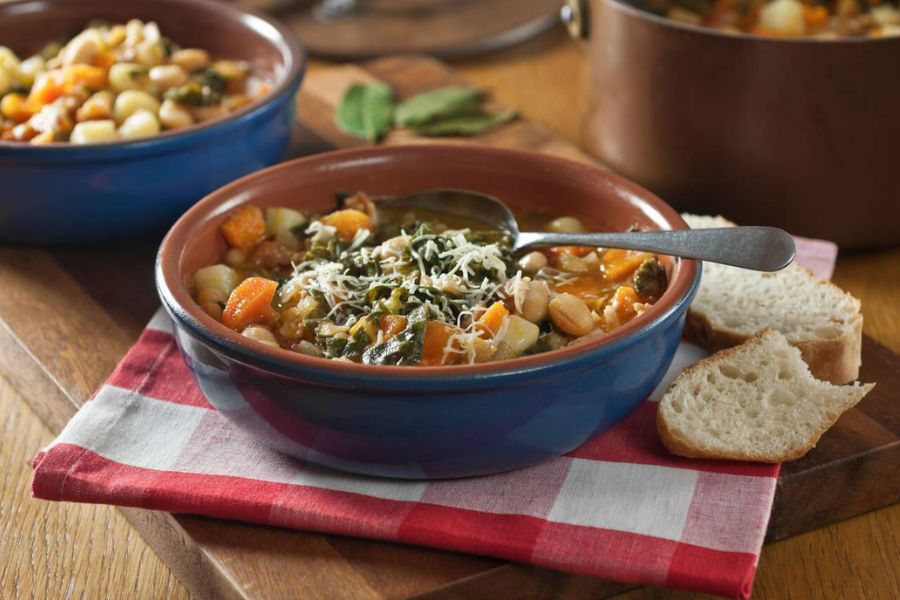
The cheeses here are exceptional too. Local pecorino cheese comes in various ages – from soft and mild to hard and sharp. I loved sampling them with a drizzle of local honey.
Local Products and Eateries
Montalcino’s specialty shops offer treasures for food lovers. I discovered tiny salumerias selling house-cured meats, local olive oils, and seasonal truffles.
For the best dining experiences, I recommend:
- Enoteca wine bars – These cozy establishments serve excellent local wines by the glass alongside platters of regional specialties
- Family-run trattorias – Look for places where locals gather for authentic homestyle cooking
- Farmers’ markets – Visit on market days to find fresh produce, honey, and artisanal cheeses
The town’s olive oils deserve special mention – golden-green and peppery, they elevate even the simplest bruschetta to something magical.
For dessert, try cantucci (almond biscuits) dipped in Vin Santo, a sweet dessert wine that perfectly concludes a Tuscan meal.
Outdoor Activities and Natural Beauty
Beyond Montalcino’s medieval walls lies a playground of natural splendor. The rolling hills and pristine landscapes offer countless opportunities for outdoor enthusiasts to connect with Tuscany’s natural beauty.
Hiking and Cycling in Val d’Orcia Natural Park
I spent an unforgettable morning hiking through Val d’Orcia Natural Park, a UNESCO World Heritage site that surrounds Montalcino. The ancient pilgrimage route, Via Francigena, passes directly through this area and makes for an excellent day trek.
The well-marked trails wind through cypress-lined roads, golden wheat fields, and silver-green olive groves. Along the way, I encountered breathtaking panoramic views that seemed straight from a Renaissance painting.
Cycling is equally rewarding here. You can rent bikes in town and follow routes that connect charming villages and vineyards. The gentle hills provide just enough challenge without being overwhelming for casual cyclists.

For the best experience, I recommend starting early in the morning when the light creates a magical atmosphere across the landscape.
Monastic Tranquility at the Abbey of Sant’Antimo
Just a short drive from Montalcino’s La Fortezza lies the Abbey of Sant’Antimo, a Romanesque monastery nestled in a peaceful valley.
This honey-colored stone abbey offers a serene escape from the bustle of sightseeing. Dating back to the 12th century, it’s a place where you can find tranquility.
I arrived just in time to hear Gregorian chants echoing through the stone interior—an experience that transported me back in time. The monks still perform these chants at select times throughout the day.
The footpaths surrounding the abbey are perfect for a contemplative stroll through olive groves and vineyards.
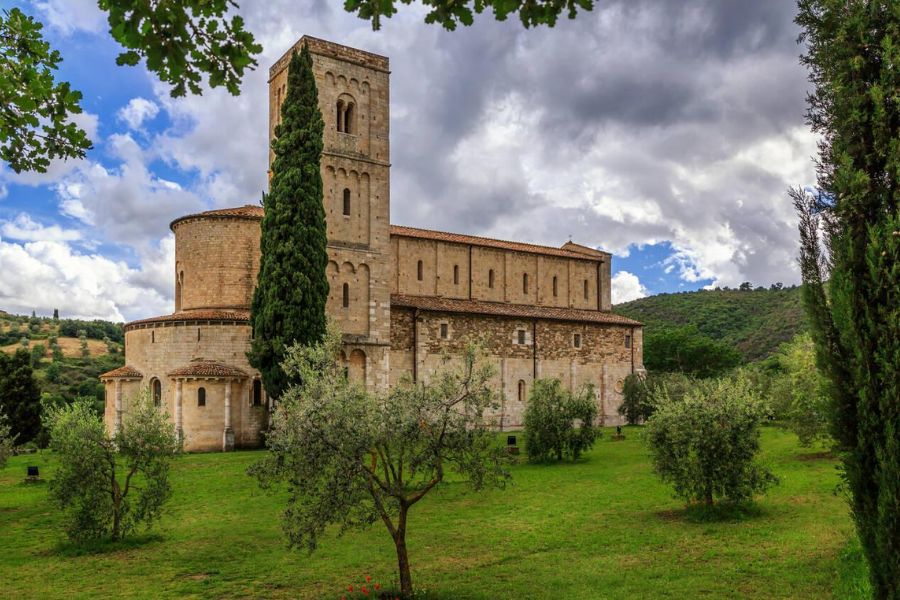
In spring, wildflowers carpet the surrounding meadows, creating a colorful backdrop to the ancient structure. For photographers, the abbey is particularly stunning in the early morning or late afternoon when the soft light bathes the stone in a golden glow.

